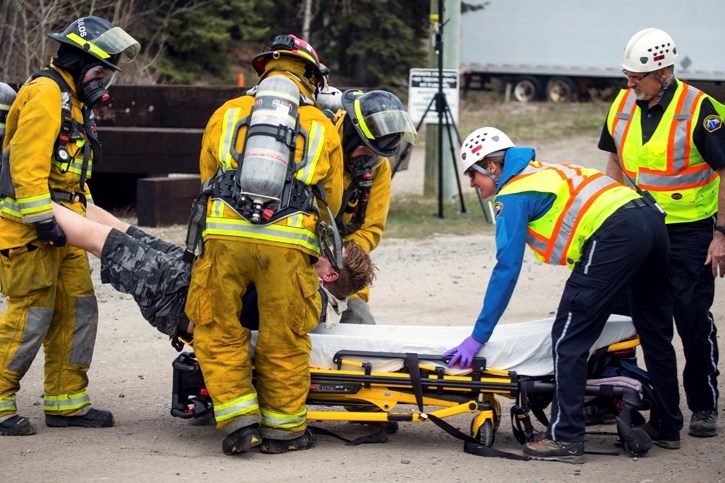Emergency crews in Banff, including local fire departments and emergency room doctors, fear patient safety is being jeopardized under Alberta Health Services’ new centralized dispatch centre for ambulances.
Foothills 911 had been responsible for dispatching both fire and Emergency Medical Services (EMS) across much of southern Alberta, but in February, a new provincial EMS dispatch system and radio communication system was launched.
Local emergency crews say the transition has been fraught with problems, errors and delays in emergency response for ambulance and fire medical responses across the province, including in Banff National Park.
Silvio Adamo, Banff’s fire chief, said they are calling for the return of a single, coordinated fire and EMS response when people dial 911, arguing the new system has led to a loss in communications and delays in paging first responders.
“We believe it’s a very serious issue,” said Adamo at a Banff town council meeting Monday (May 8). “It puts the public at a higher risk than they should be.”
Under the new system, rural 911 ambulance calls are dispatched to AHS’s centralized dispatch centre, and then there’s a wait time for when that call is transferred for the fire-first response.
Typically, for urgent calls fire department crews trained and qualified in emergency medicine are dispatched with a medical first response and sent to stabilize patients prior to ambulance arrival.
According to the Foothills Regional Emergency Services Commission, the total time to dispatch a medical fire response under the new system is an average of five minutes, or three times longer than before.
Improvement District 9, which runs the Lake Louise fire department, said this is unacceptable.
“We need those minutes back because these are life and death minutes,” said ID representative Davina Bernard at Monday’s council meeting.
The new radio communications system has led to “dead spots” where there is no communication between EMS crews and dispatch. The dead zones include 73 kilometres of Trans-Canada Highway between Banff and Lake Louise, as well as the road to Sunshine.
Another problem with the new centralized system is what local emergency crews see as a critical lack of understanding of resources in Banff, and the surrounding geography.
Banff emergency physicians say this led to a case at Lake Louise where a person in cardiac arrest had delayed response and treatment. Other cases have had communication concerns and, although didn’t result in delayed care, had the potential.
The physicians have sent a letter to Health Minister Sarah Hoffman outlining their concerns and call for a better solution, noting that “seconds and minutes can make the difference between life and death.”
They say the former unified system was functional and accounted for local tracking of emergency crews, integration with Parks Canada rescues and efficient mobilization of crews that are often stretched.
“There is a problem. This is affecting patient care,” said Dr. Lance Shepherd, an emergency room physician at Banff’s Mineral Springs Hospital, during Monday’s council meeting.
AHS could not provide a spokesperson by press time, but Minister Sarah Hoffman said the safety of Albertans is always the first priority.
“We are aware of concerns raised by local leaders,” wrote Hoffman in an email statement. “We are monitoring the situation closely and our expectation is that AHS maintain response times.”
Officials with Foothills Regional Emergency Services Commission (FRESC) say AHS does notify Foothills 911 of a medial fire response in a community, but this is not a priority and is frequently delayed well over industry standard.
Jamie Thiessen, FRESC vice-chair, said many errors have occurred throughout the province under the new dispatch and communication system, including not sending the best located ambulance or sending an ambulance to the wrong address.
In addition, he said often there is no ambulance to respond if they are already dispatched elsewhere, so sending a local fire department immediately is critical to filling in the gaps.
“Every second counts and lives are at risk,” he said.
Banff-Cochrane MLA Cameron Westhead said he has been in constant communication with officials in Banff, and set up a face-to-face meeting with Adamo and the minister in April.
“We will be holding AHS accountable to address these issues,” said Westhead.
Banff Mayor Karen Sorensen said she thought the issue was on the way to being resolved. “It’s scary, frankly,” she said.
Councillor Chip Olver agreed.
“There’s an absolute necessity for action in the short-term,” she said. “The fact that it hasn’t is unbelievable.”




